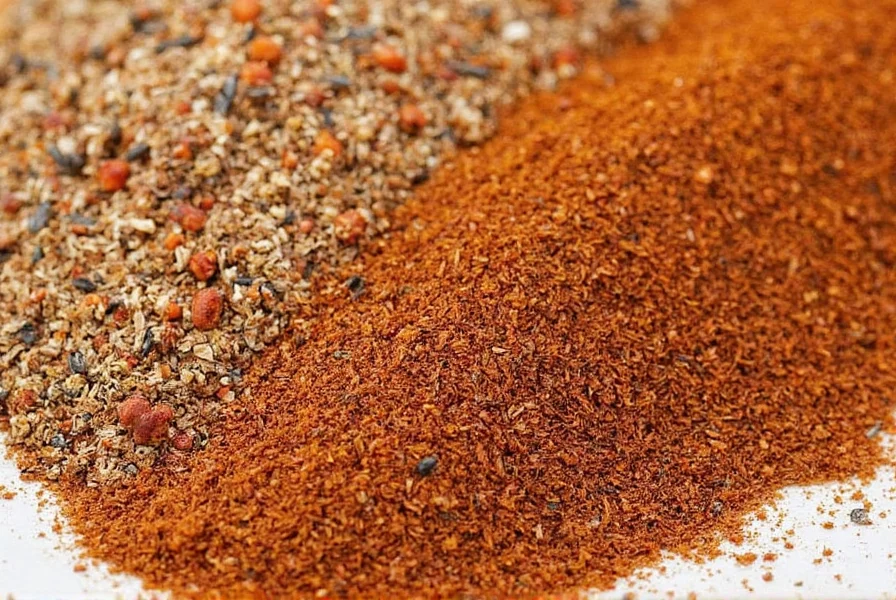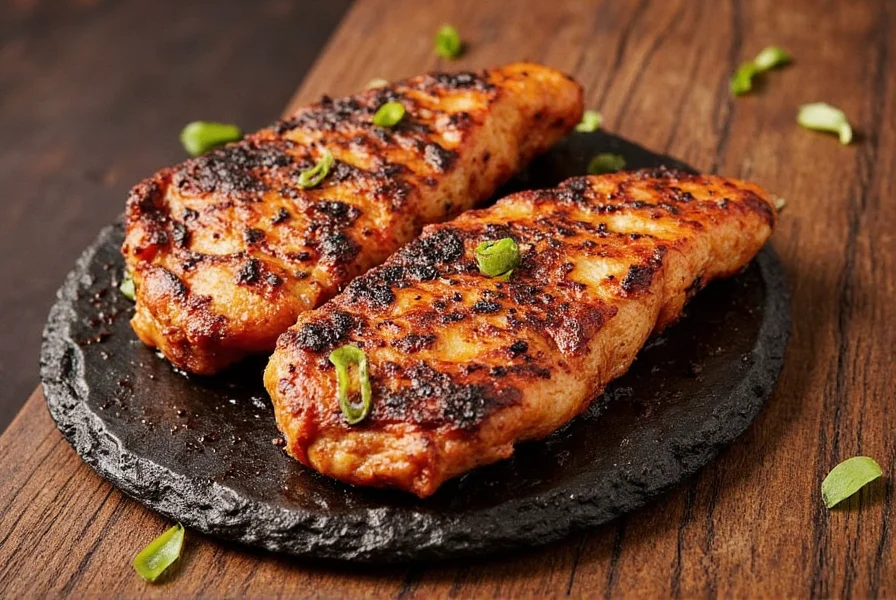Understanding what is blackened seasoning requires examining its unique composition and culinary purpose. This versatile spice mixture creates that distinctive charred exterior on proteins without actual burning, delivering complex flavor with moderate heat. Unlike simple seasoning blends, blackened seasoning works through the Maillard reaction when applied generously to food and cooked at very high temperatures.
Core Ingredients of Blackened Seasoning
The magic of blackened seasoning ingredients lies in their specific combination. While recipes vary by chef and region, the essential components include:
| Primary Ingredient | Flavor Contribution | Typical Percentage |
|---|---|---|
| Paprika | Earthy base, color | 30-40% |
| Cayenne Pepper | Heat component | 10-15% |
| Garlic Powder | Savory depth | 10-12% |
| Onion Powder | Sweetness, complexity | 8-10% |
| Dried Thyme | Herbal note | 5-7% |
| Dried Oregano | Earthy herb flavor | 5-7% |
| Salt | Flavor enhancer | 10-15% |
| Black Pepper | Sharp heat, complexity | 5-8% |
Origin and Culinary History
The technique of blackening food originated in Creole and Cajun cooking traditions of Louisiana. Chef Paul Prudhomme popularized blackened redfish seasoning in the 1980s, creating a national sensation. The method involves coating proteins generously with the spice blend then cooking in a smoking-hot cast iron skillet, creating a flavorful "blackened" crust through controlled charring.
Understanding what does blackened seasoning taste like requires recognizing its complex profile: smoky from the paprika, moderately spicy from cayenne, with herbal notes from thyme and oregano, all balanced by garlic and onion undertones. The heat level can be adjusted by varying the cayenne content, making it adaptable for different palates.
Blackened vs. Cajun vs. Creole Seasoning
Many home cooks confuse these regional blends. The key differences:
- Blackened seasoning: Higher salt content, designed specifically for high-heat cooking to create a crust
- Cajun seasoning: Typically hotter, with more cayenne and black pepper, less emphasis on herbs
- Creole seasoning: More herbal, with greater emphasis on oregano and thyme, generally milder
When exploring blackened seasoning vs cajun, remember that blackened is a cooking technique first, with a specific spice blend optimized for that method, while Cajun refers to a broader regional cuisine style.
How to Use Blackened Seasoning Properly
Knowing how to use blackened seasoning correctly makes all the difference in achieving authentic results:
- Dry the protein surface thoroughly (moisture prevents proper blackening)
- Apply a generous, even coating (about 1 tablespoon per 6oz protein)
- Use a preheated cast iron skillet until smoking hot
- Cook for 2-3 minutes per side for fish, 3-4 minutes for chicken
- Avoid overcrowding the pan to maintain high heat
For those wondering can you use blackened seasoning as regular seasoning, the answer is yes—but with caveats. The high salt content means you should reduce additional salt in your recipe. It works well as a general seasoning for roasted vegetables, potatoes, or even popcorn when used sparingly.
Homemade Blackened Seasoning Recipe
Creating your own homemade blackened seasoning recipe ensures freshness and allows customization. This basic recipe makes about ½ cup:

- 2 tablespoons paprika (smoked paprika for extra depth)
- 1 tablespoon garlic powder
- 1 tablespoon onion powder
- 1½ teaspoons dried thyme
- 1½ teaspoons dried oregano
- 1½ teaspoons cayenne pepper (adjust to taste)
- 1 tablespoon freshly ground black pepper
- 1½ tablespoons sea salt
- ½ teaspoon dried basil (optional)
Mix all ingredients thoroughly in a small bowl. Store in an airtight container away from light and heat. Properly stored, how long does blackened seasoning last? About 6 months for peak flavor, though it remains safe indefinitely if kept dry.
Popular Applications and Recipe Ideas
While traditionally used for blackened fish seasoning, this versatile blend works across proteins:
- Blackened chicken: Coat chicken breasts and cook in cast iron for 3-4 minutes per side
- Blackened shrimp: Toss with olive oil and seasoning, cook 1-2 minutes per side
- Blackened tofu: Press tofu, coat generously, and pan-sear for vegan option
- Vegetable blackening: Works well with cauliflower steaks or thick-sliced mushrooms
For those seeking blackened chicken seasoning mix alternatives, consider adding lemon zest or a touch of brown sugar for sweet-heat variations. The beauty of what is blackened seasoning mix lies in its adaptability to personal taste preferences while maintaining its essential character.
Storage and Shelf Life Considerations
To maintain optimal flavor in your blackened seasoning homemade blend:
- Store in airtight glass container away from heat and light
- Avoid introducing moisture (don't shake directly over steaming pots)
- Label with creation date for freshness tracking
- Refresh spices if aroma diminishes significantly
Commercial blends often contain anti-caking agents, but does blackened seasoning go bad? While not unsafe, spices lose potency over time. For best results in blackened redfish seasoning applications, replace your blend every 6-12 months.
Frequently Asked Questions
What is the difference between blackened and Cajun seasoning?
Blackened seasoning has higher salt content specifically formulated for high-heat cooking to create a charred crust, while Cajun seasoning typically contains more cayenne and black pepper with less emphasis on herbs. Blackened is a cooking technique first, with a spice blend optimized for that method.
Can I use blackened seasoning for everyday cooking?
Yes, but adjust salt in your recipes since blackened seasoning contains significant salt. It works well for roasted vegetables, potatoes, or popcorn when used sparingly. The high paprika content adds color and flavor to many dishes beyond the traditional blackening technique.
Why isn't my food properly blackening?
Common issues include insufficient pan heat (must be smoking hot), too much moisture on the protein surface, or inadequate seasoning coverage. Ensure your cast iron skillet is properly preheated for 5-7 minutes and pat proteins completely dry before applying a generous, even coating of seasoning.
Is blackened seasoning very spicy?
Traditional blackened seasoning has moderate heat from cayenne pepper, but it's not overwhelmingly spicy. The heat level can be adjusted by reducing or increasing the cayenne content. Most blends prioritize complex flavor over intense heat, with paprika providing the dominant flavor note.
What proteins work best with blackened seasoning?
Firm-fleshed fish like salmon or redfish work exceptionally well, as do chicken breasts, shrimp, and steak. Tofu and hearty vegetables like cauliflower also respond well to the blackening technique. Avoid delicate proteins that might fall apart at high heat temperatures.











 浙公网安备
33010002000092号
浙公网安备
33010002000092号 浙B2-20120091-4
浙B2-20120091-4